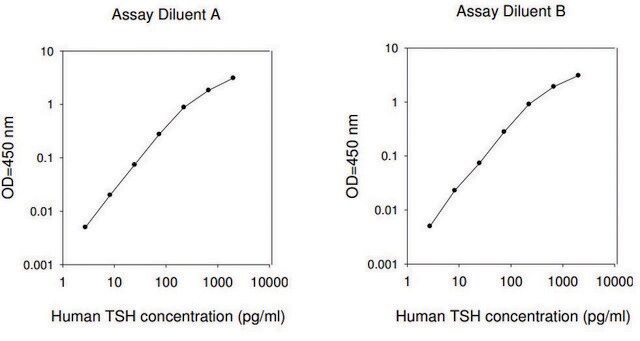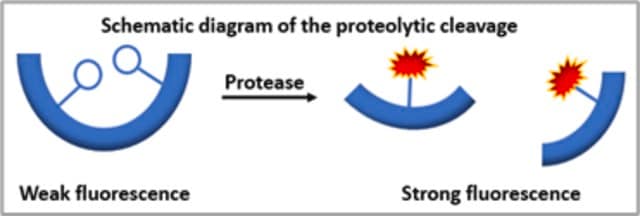CHP2NC
Imprint® Ultra Chromatin Immunoprecipitation Kit, Without Controls
ChIP kit for maximum sensitivity, compatible with Next-Gen sequencing
Sign Into View Organizational & Contract Pricing
All Photos(5)
About This Item
UNSPSC Code:
41116158
NACRES:
NA.54
Recommended Products
General description
The Imprint Ultra Chromatin IP Kit is Sigma′s second generation chromatin immunoprecipitation (ChIP) kit developed for maximum sensitivity and optimum next-generation sequencing results. It provides a complete solution for Chromatin Immunoprecipitation, including columns and reagents for DNA purification. The kit allows researchers to explore the genome-wide binding sites of low abundance transcription factors (TFs), as well as novel histone modifications. It is optimized for ChIP reactions with chromatin from 106 cells (up to ~50 μg DNA), and can also be scaled up (or several preparations pooled) to accommodate 108 cells for genome-wide binding studies in ChIP-chip and ChIP-Seq applications.
Application
- Suitable for downstream applications
- Individual target characterization to genome-wide profiling techniques
- Characterization of signal transduction pathways
- Verification of ChIp-chIP and ChIP-seq data
Features and Benefits
- Use successfully CHiP′ed DNA associated with low abundance, medium, and highly expressed transcription factors, as well as histone modifications
- Greater capacity - can be used over a wide range of cell numbers ranging from 2-10 × 106
- Maximum sensitivity - capable of detecting low abundance transcription factors with as little as 2 × 106 cells
- Employs DNA-Blocked "Staph-Seq" for IP (immunoprecipitation), minimizing contaminating Staph A DNA in downstream ChIP-Seq applications.
Legal Information
Imprint is a registered trademark of Merck KGaA, Darmstadt, Germany
Kit Components Only
Product No.
Description
- Sodium dodecyl sulfate solution, for molecular biology, 10% in 18 megohm water
- Monoclonal Anti-POLR2A antibody produced in mouse, clone 1F17, purified immunoglobulin, buffered aqueous solution
Kit Components Also Available Separately
Product No.
Description
SDS
- S6576ChIP Next Gen Seq Sepharose™SDS
- I8896IGEPAL® CA-630, for molecular biologySDS
- S5150Sodium chloride solution, 5 M in H2O, BioReagent, for molecular biology, suitable for cell cultureSDS
- W4502Water, Nuclease-Free Water, for Molecular BiologySDS
- I5006IgG from rabbit serum, reagent grade, ≥95% (SDS-PAGE), essentially salt-free, lyophilized powderSDS
- I5381IgG from mouse serum, reagent grade, ≥95% (SDS-PAGE), lyophilized powderSDS
- A7638Bovine Serum Albumin, lyophilized powder, essentially globulin free, ≥99% (agarose gel electrophoresis)SDS
- A84564-(2-Aminoethyl)benzenesulfonyl fluoride hydrochloride, ≥97.0% (HPLC)SDS
- D9156Deoxyribonucleic acid, single stranded from salmon testes, For hybridizationSDS
- M7023Anti-Mouse IgG (whole molecule) antibody produced in rabbit, IgG fraction of antiserum, buffered aqueous solutionSDS
- P8340Protease Inhibitor Cocktail, for use with mammalian cell and tissue extracts, DMSO solutionSDS
- R4642Ribonuclease A from bovine pancreas, (Solution of 50% glycerol, 10mM Tris-HCL pH 8.0)SDS
See All (12)
Signal Word
Danger
Hazard Statements
Precautionary Statements
Hazard Classifications
Acute Tox. 4 Oral - Aquatic Acute 1 - Aquatic Chronic 1 - Eye Dam. 1 - Flam. Liq. 3 - Met. Corr. 1 - Ox. Liq. 1 - Resp. Sens. 1 - Skin Corr. 1B - STOT SE 3
Target Organs
Central nervous system
Storage Class Code
5.1A - Strongly oxidizing hazardous materials
Certificates of Analysis (COA)
Search for Certificates of Analysis (COA) by entering the products Lot/Batch Number. Lot and Batch Numbers can be found on a product’s label following the words ‘Lot’ or ‘Batch’.
Already Own This Product?
Find documentation for the products that you have recently purchased in the Document Library.
Chromatin isolation by RNA purification (ChIRP).
Chu, C., et al.
Journal of Visualized Experiments (2012)
Comparison of sample preparation methods for ChIP-chip assays.
O'Geen, H., et al.
Biotechniques, 41, 557-557 (2006)
Philippe Collas
Molecular biotechnology, 45(1), 87-100 (2010-01-16)
The biological significance of interactions of nuclear proteins with DNA in the context of gene expression, cell differentiation, or disease has immensely been enhanced by the advent of chromatin immunoprecipitation (ChIP). ChIP is a technique whereby a protein of interest
Genomic maps of long noncoding RNA occupancy reveal principles of RNA-chromatin interactions.
Chu, C., et al.
Molecular Cell (2011)
Genetic Framework for GATA Factor Function in Vascular Biology
Linnemann A.K., et al.
Proceedings of the National Academy of Sciences of the USA, 1, 13641-13646 (2011)
Our team of scientists has experience in all areas of research including Life Science, Material Science, Chemical Synthesis, Chromatography, Analytical and many others.
Contact Technical Service














